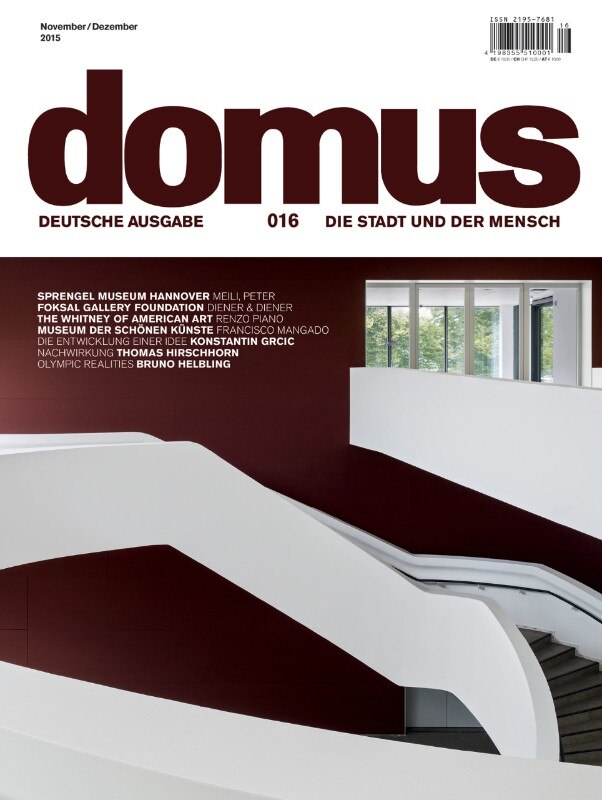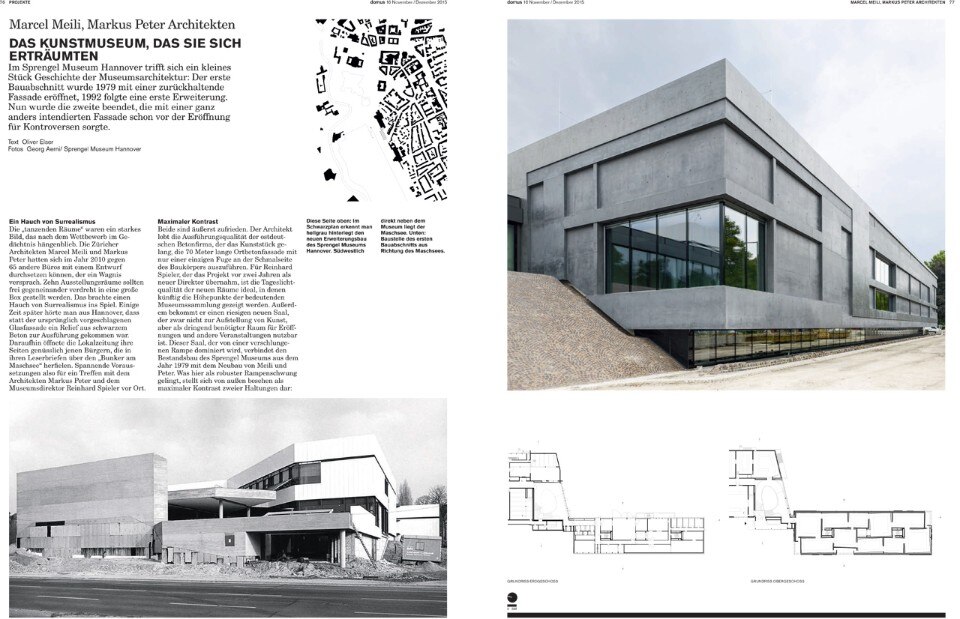Some interesting correspondences and tendencies emerged from this: while two of the museums look inward with modulated concrete façades, the two others open up to their urban surroundings with a metal-and-glass structure. In his bright museum extension, Francisco Mangado places the fine arts behind the historic fronts of a block of buildings in the heart of the old quarter of Oviedo in Spain, thus making an architectural link between historic spaces and a contemporary space. With his new Whitney Museum in Manhattan, Renzo Piano gives art a public stage, making visitors and the city part of the set.
By contrast, the Swiss architects Marcel Meili and Markus Peter, in their extension for the Sprengel Museum in Hanover, make the rooms dance by turning them towards one another in a big black concrete box. And the Swiss architects Diener & Diener transformed the socialist-style steel-and-glass construction of the Foksal Gallery Foundation in Warsaw into a grey box of cast concrete reliefs and windows that reflect the inner structure on the exterior in a manner that is both functional and playful. Finally Walter Angonese, an architect from South Tyrol/Alto Adige, designed a house for an art collector in Bolzano that makes it a pleasure to live with art: he adapted this villa in a vineyard to the landscape, and skilfully placed the art beneath the ground.
Temporary spaces open and conclude this issue. Olivier Grossetête’s “Constructions monumentales” need no museum: they are buildings made of cardboard that he constructs in collaboration with residents as a city within the city, and which give an entirely new meaning to the idea of art in public spaces. The artist Thomas Hirschhorn, in turn, puts the temporary and the transient in a museum: his installation in the Kunsthalle in Bremen asks questions about meaning by presenting five paintings selected from the collection in a landscape of ruins. The Italian architect Giovanni Filindeu, finally, states the case for exhibition design, elevating it to architecture.
A real dynamism has come to art spaces, and with them to architecture. In view of this, the museum as an institution has no choice but to seek to reposition itself. “Those museums in which the architecture claims centre stage in relation to the art have clearly had their day,” writes Oliver Elser in his review of the Sprengel Museum in Hanover. Moreover, museum buildings have a difficult task, as they have to pursue two different aims – Aaron Betsky thus puts it in a nutshell in the German edition of Domus no. 9: “On the one hand, they have to be monuments. On the other hand, art museums are also cultural attractions. In that sense, they are our secular churches.” They are expected to create a sense of identity and at the same time to be seductive. It remains to be seen how far the recently opened museums live up to all these demands. The German Domus, for its part, will keep a watchful eye on further developments in the world of museums.



